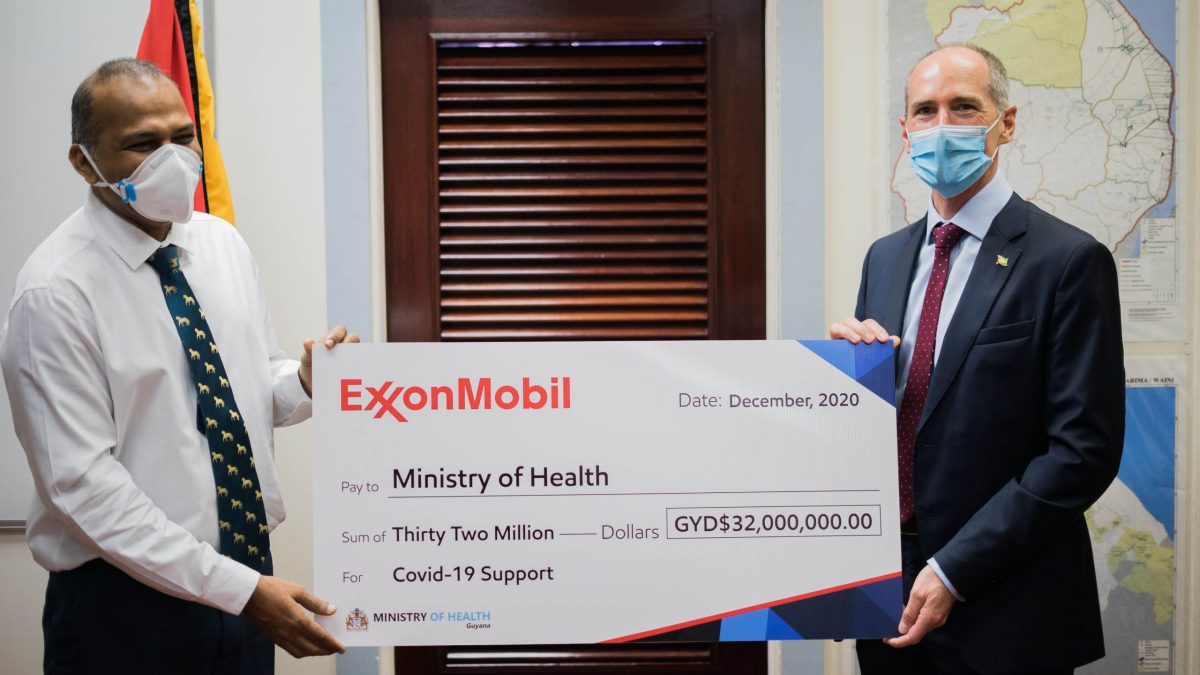The US oil company ExxonMobil is in the process of further deepening its footprint in Guyana by seeking to move a greater volume of its services from Trinidad and Tobago to Guyana, according to an Oil Now report.
The report suggests that ExxonMobil’s shifting of services is indicative of a recognition of the increase of local capacity in Guyana, a circumstance that would enable the oil company to locate more of its shore base services here.
ExxonMobil is currently engaged in what is, these days, the single most significant oil recovery exercise in the region, offshore Guyana, where it is now in control of operations in the Stabroek, Kaieteur, and Canje blocks, the Oil Now report says.

It is believed that the supply chain capacity in Guyana has been growing exponentially over the years.
The development of the oil and gas industry in Guyana is widely considered to have moved at a rapid pace from the announcement of the first oil find in May 2015 to a point where shipments of crude recovered offshore Guyana have already been exported to India.
At home, concrete evidence that Guyana is now an oil-producing country is reflected in the continued influx of investors into the country, various construction and infrastructure projects and a preoccupation by the ‘heavy hitters’ in the private sector with the local content spinoff from oil and gas-related investments here. These developments have been attended by a surfeit of media reporting on issues that include whether or not the division of the spoils from the country’s oil returns are not weighed overwhelming heavily in favour of ExxonMobil and whether the government’s lack of experience in the oil and gas sector does not mean that it is less than ideally positioned to cause it to successfully correct such imbalance as may exist in the division of the spoils.
Just a few weeks ago the country also saw a short, sharp burst of media-driven public discourse over issues relating to the importance of the integrity of the arrangements for the management of the returns from the sector.
While Oil Now asserts that increasing numbers of Guyanese companies have been entering into partnerships involving operations to service the offshore activities “where multiple exploration appraisal and development drilling campaigns are underway” observers have noticed that, up until now, the trickle-down effect has had little if any impact on the country’s small and micro businesses, the scale of whose operations are too limited to meet the requirements of the company’s operating needs. Oil Now also alludes to the role being played by the local fabrication company, Guyana Oil and Gas Support Services Inc. (GOGSSI) in providing the workforce to Saipem SpA, the Italian oilfield services company contracted to assemble, test and load subsea jumpers for the second phase of ExxonMobil’s Liza development, pursuits that were previously undertaken in Trinidad and Tobago. This work was previously done in Trinidad. Routledge is on record as saying that by “sometime in 2022,” virtually all of that supply chain, work will have been moved to Guyana from Trinidad.
The shifting of more of the support services necessary for the execution of the work of ExxonMobil to Guyana will raise hopes of increased levels of job creation for locals in the oil and gas sector, an issue that had arisen even before the company began its oil recovery operations offshore Guyana.
Given ExxonMobil’s reported planned drilling of more than fifty (50) wells offshore Guyana over the next four to five years, the portents for increased levels of foreign investment in Guyana would appear to be good though the extent to which the increased activity will impact on job-creation in the sector for Guyanese, given the continued high levels of unemployment here.






